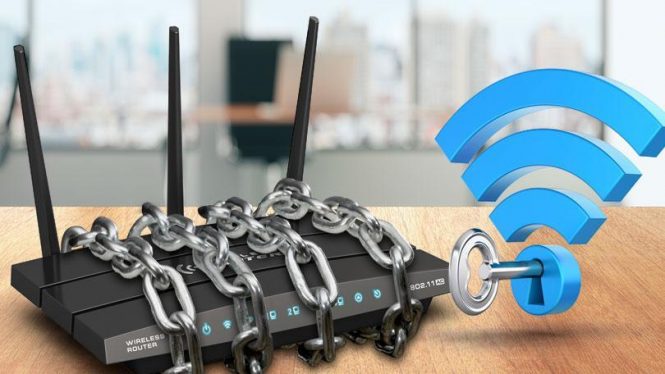You’ve been so generous without even knowing it because for some time your neighbors have also used your Internet connection… at your expense. So what can you do to hide Wifi from your neighbors? Let’s see together.
Enable WPA2 encryption on the wireless router
If not, consult your wireless router manual and enable WPA2 encryption on your wireless router. You may already have encryption enabled, but you could use outdated and vulnerable WEP encryption. WEP can be easily hacked even by novice hackers in less than a minute or two using free tools available on the Internet. Enable WPA2 encryption and set up a complex password for your network.
Hide your Wifi network by changing its name (SSID)
Your SSID is the name assigned to your wireless network. You should always change this name, issued by the modem manufacturer and usually used a lot. Changing the name helps prevent hackers and leeches from identifying specific vulnerabilities associated with the router brand.
If hackers know the name of the modem, they might find an exploit to use against it (if it exists). The modem name also helps them determine what the default administrator password for the router might be (if you haven’t changed it).
Use a random name as your WiFi network name. The longer the SSID, the better it is because it helps hackers use Rainbow Table- based attacks to try to crack wireless encryption.
How to connect to a network with a hidden SSID (name)
The network name is not shown to wireless devices (once hidden) which is why SSID transmission is disabled. Connecting to the network, therefore, is not so easy.
Since the SSID no longer appears in the list of networks shown to wireless devices, they must manually configure the profile settings, including the network name and security mode. After making the initial connection, the devices remember these settings and will not have to be configured again.
For example, an iPhone can connect to a hidden network via the Settings app in the Wi-Fi menu > Other.
Is it necessary to disable the SSID transmission on the home network?
Home networks do not require the use of a visible SSID unless the network uses multiple access points between devices. If your network uses a single router, disabling this feature is a compromise between the potential security advantages and the difficulty in configuring new wireless devices in your home.
Although many users completely ignore the security benefits of hiding the WiFi network, using this technique increases the chance that hackers or leeches will ignore your network and look for a simpler goal. It also reduces the visibility of your Wi-Fi network with nearby families.
However, for many, it may be inconvenient to hide the WiFi network if they often need to connect new devices.
Disable the “Allow administrator via wireless” feature
As an additional precaution against hackers, disable the “allow administration via wireless” feature on the router. This will help prevent a wireless hacker from gaining control of the wireless router. Disabling this function tells the router to allow the router to be administered only from a computer connected directly via an Ethernet cable.
This means that they should practically be at home to access your router’s administrative console.
Once hidden the network, your neighbors will not be able to use your Wifi network and maybe you’ll have enough width an HD movie without stuttering bandwidth to stream.
Conclusion
Disabling the SSID transmission is a possible technique to strengthen security on a Wi-Fi network. A family should evaluate, based on where it lives, how much network security is needed, so make a decision about this function for a security strategy.

